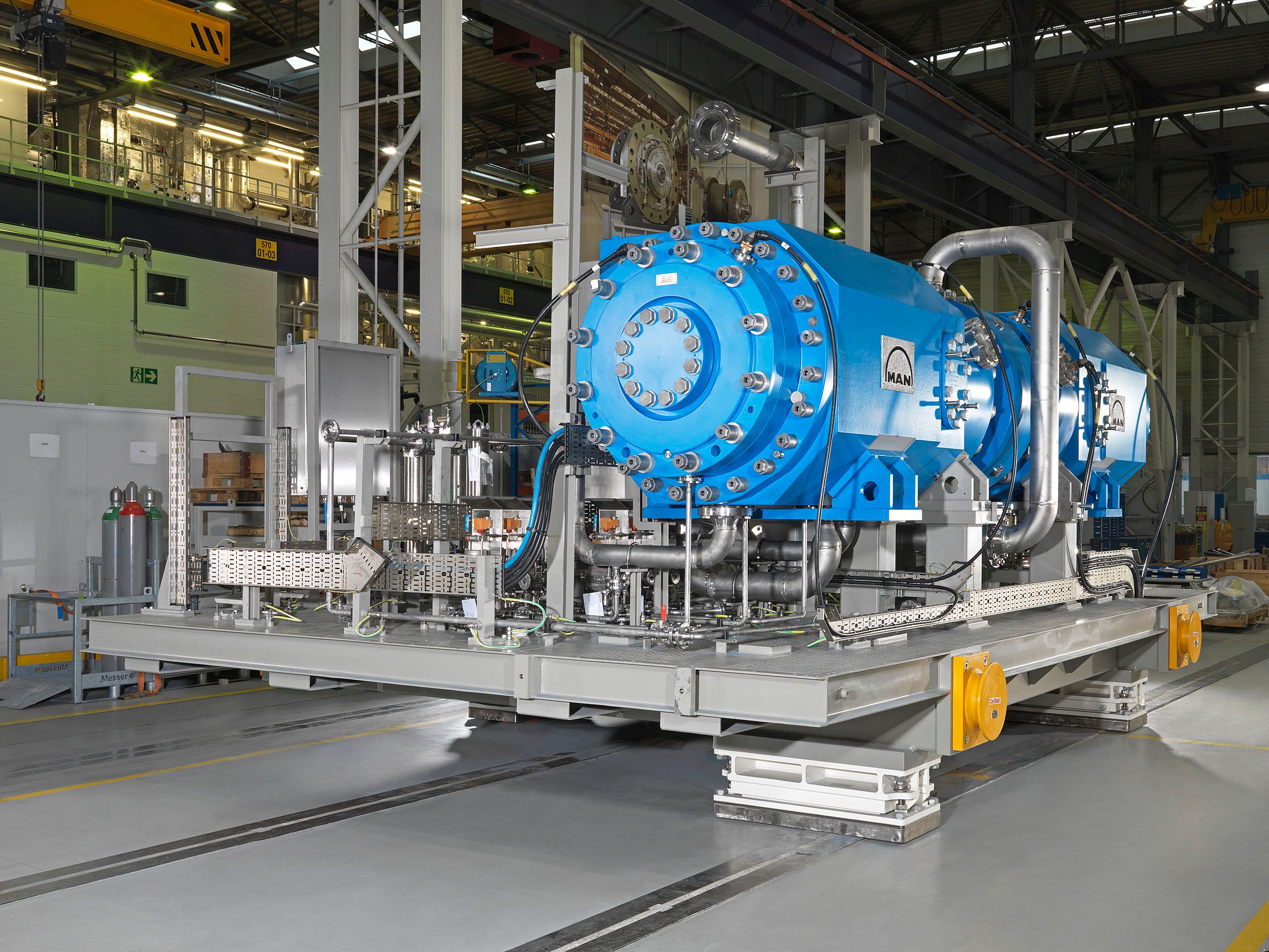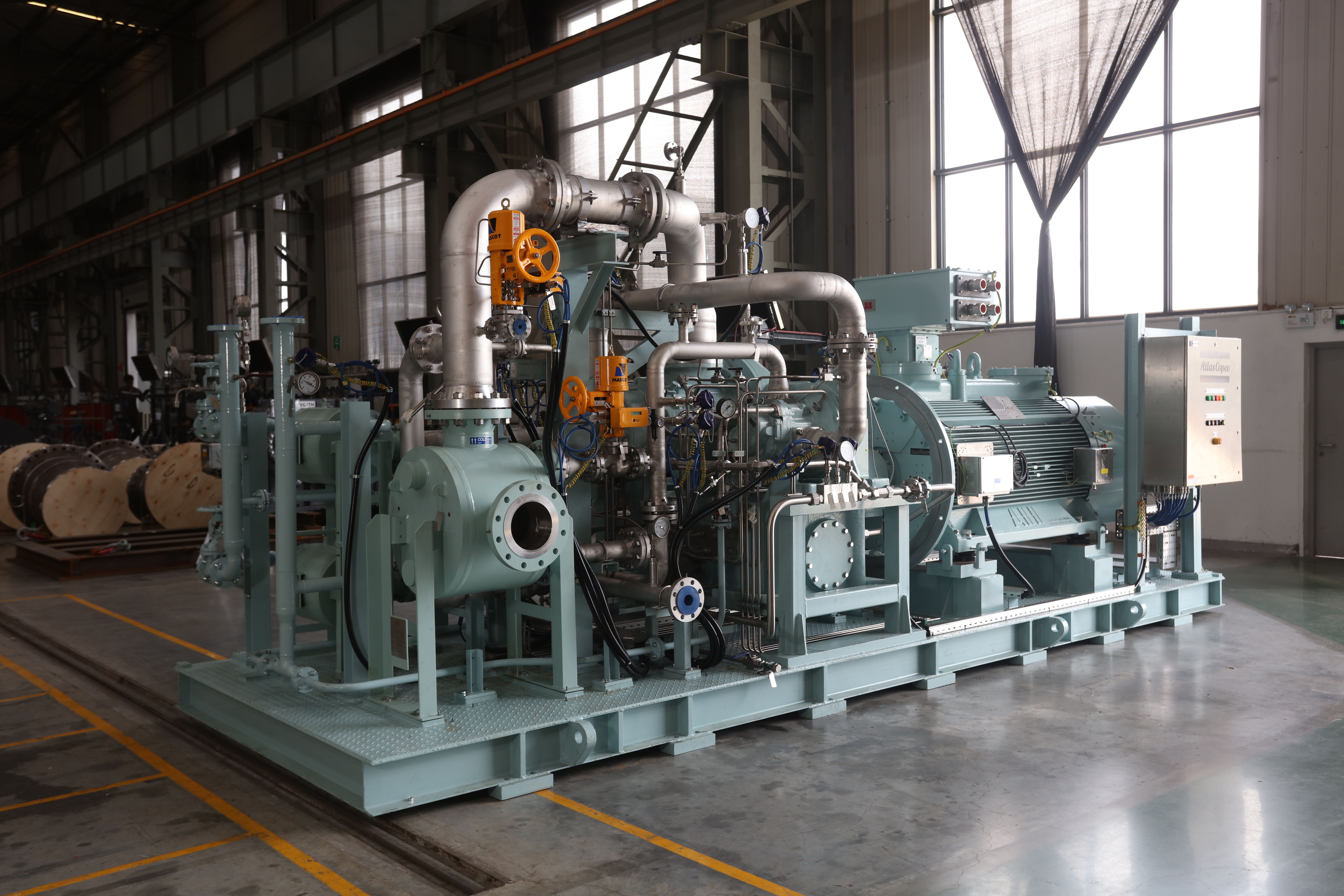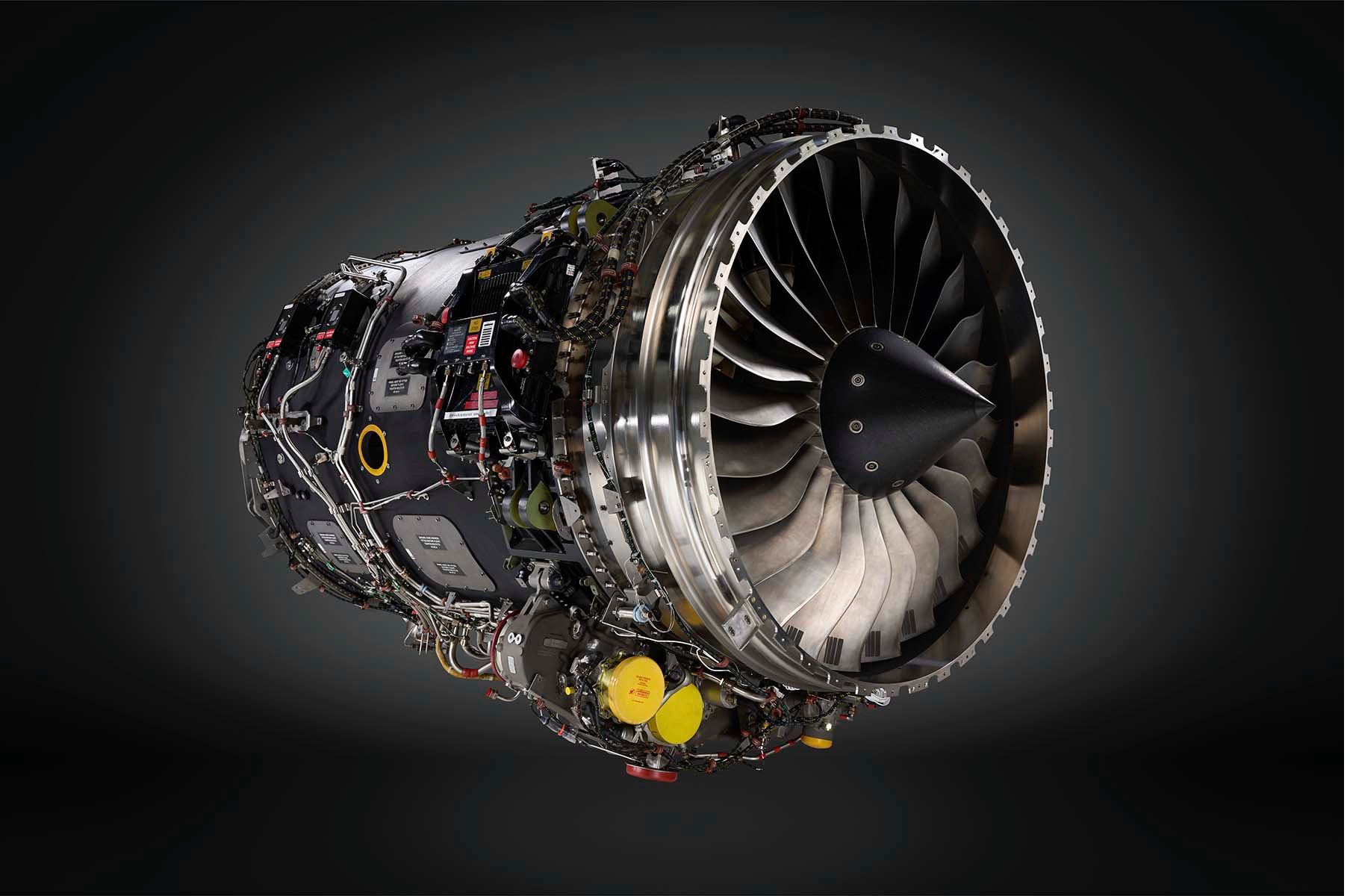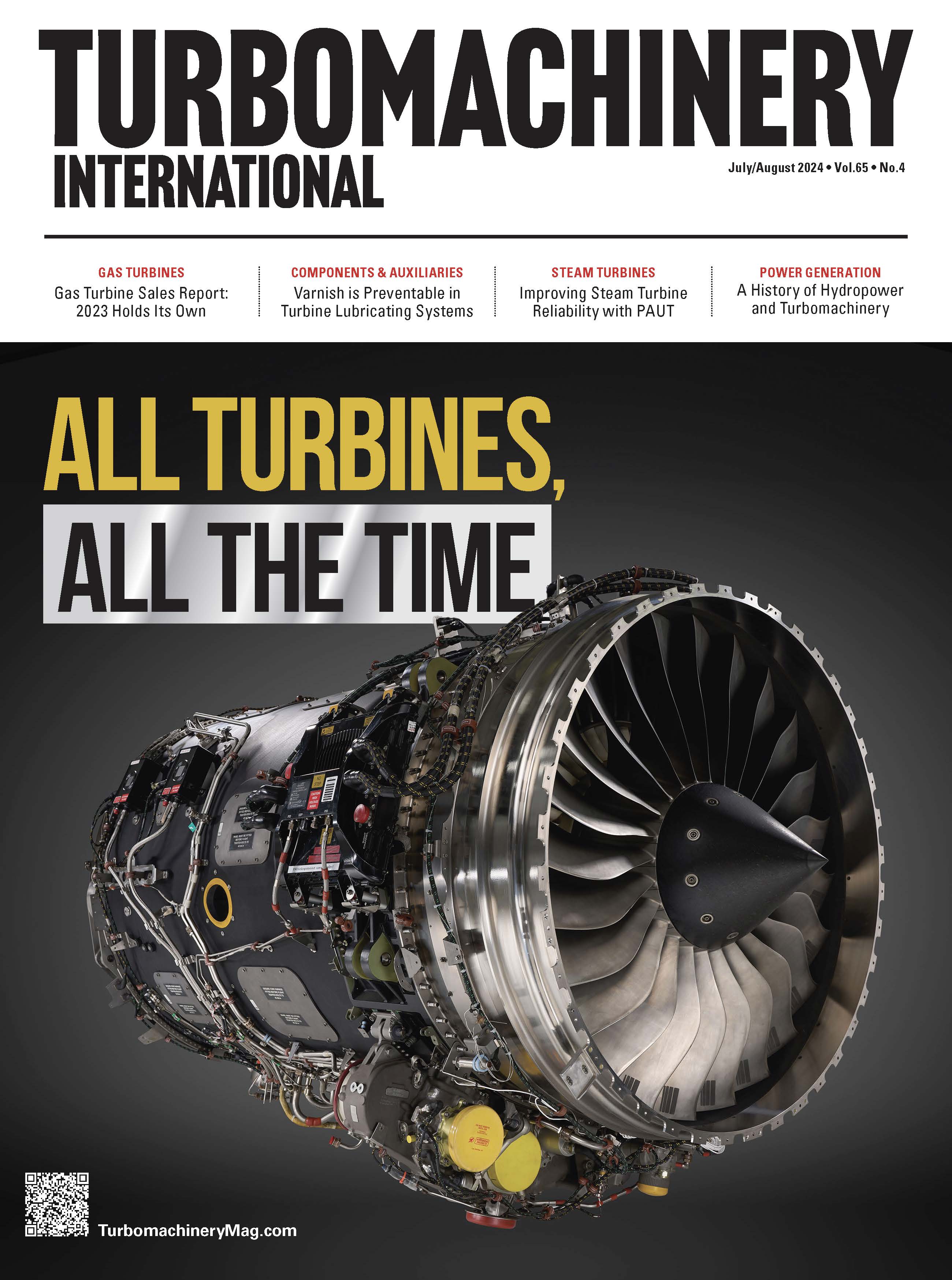From Sea to Sky: Turbomachinery in Military and Commercial Applications
Gas turbine systems are the heart and soul of many defense—including naval and aero—and commercial offshore operations, providing reliable, efficient power.
Gas turbines are known for their role in land-based power generation applications, but they are also responsible for powering commercial and military naval and aircraft fleets around the world. The development of these turbines demonstrates the acceleration of technological innovation and adaptation in the power industry.
“Since the turn of the 20th century, steam turbine systems dominated the naval market, providing mechanical power for all types of warship propulsion trains,” said Steve Maynard, former Captain in the U.S. Navy and Director of Military Applications at GE Aerospace. “In the 1970s, however, gas turbine systems began proliferating across the world’s navies. The heart of these turbomachinery systems was the marine gas turbine engine—derived from parent aircraft engines originally designed to produce thrust. From these proven aviation engines, marine aeroderivative turbines were adapted to instead produce torque to power ship propellers, waterjets, and electrical generators.”
IF BY SEA
Turbomachinery has thrived in the naval domain since the 1970s “because it demonstrates superior power density, reliability, and maintainability. These are critical attributes for volume-sensitive warships and, most importantly, they significantly contribute to combat readiness,” Maynard said.
Marine turbines designed and manufactured by some of the top turbine producers are used among large-surface combatant vessels in navies across the globe. Maynard clarified their possible roles: to power the mechanical propulsion drive train, provide electric power for propulsion drives and motors, or provide electrical power for ship service loads such as high-energy weapons systems, advanced sensor suites, and hotel services.
Within larger combat vessels, all-electric propulsion plants equipped with gas turbines and large-scale turbine generators provide the flexibility to move power back and forth between propulsion and combat systems. The propulsion plant configuration varies on smaller ships, such as corvettes and frigates, as these vessels are often equipped with hybrid electric plants that feature a combination of gas turbines and diesels to provide propulsion and ship service power.
“In these smaller combatants, design authorities are increasingly selecting turbomachinery systems for power-dense drive train solutions that provide high-speed capability; this is an important tactical attribute in modern warfare and perfectly suits their smaller hull forms,” Maynard said.
SGT-A35 gas turbine. Credit: Siemens Energy

OFFSHORE APPLICATIONS
In addition to propulsion applications in the marine space, gas turbines are often used for offshore applications such as floating production, storage, and offloading (FPSO) units and fixed-leg assets in oil and gas production. According to Siemens Energy’s Global Head of Oil & Gas Patrice Laporte, they are installed on platforms “topside for power and process operations such as power generation, the compression and transmission of export sales gas, and carbon capture and reinjection.” These gas turbines are relied upon for their continuous operation and effective resource utilization.
“Turbomachinery plays a critical role in offshore applications, serving as key components across various facilities and subsea installations,” said Holger Wörner, Head of Sales Upstream, MAN Energy Solutions. “The primary advantages of turbomachinery in these contexts include enhanced reliability and uptime, essential for continuous operation and effective resource utilization. Additionally, it contributes to reducing the carbon footprint during operations by enabling more efficient use of energy.”
He said a major trend in offshore turbomachinery is its use for subsea compression, increasing the total recovery of a gas field, maximizing efficiency, and releasing less CO2 into the atmosphere compared to topside platform exploration.
HOFIM compressor for subsea applications. Credit: MAN Energy Solutions

“There is a noticeable shift toward unmanned or low-manned systems, enhancing safety, and reducing operational costs by requiring minimal human intervention,” Wörner said. “Electrification projects are also gaining momentum, with an increasing number of gas turbine-driven machines being replaced by electric motors. This shift aims to improve efficiency and reduce emissions.”
MARINE COMPRESSORS
Although marine gas turbine components are subject to unique operational requirements compared to their land-based alternatives, Jacqui Joas, Global Business Development Manager at Atlas Copco Gas and Process, said compressors serve the same function at sea as on land: reducing operating costs and emissions.
Marine compressors can start the engine, reduce fuel consumption, control LNG tank pressure, and release boil-off gas (BOG) to shore during bunkering operations. These BOG compressors also reduce emissions using LNG instead of marine and heavy-fuel oil. Marine-based models must consider the conditions at sea and within a ship environment, such as the vessel’s roll-and-pitch, a salty atmosphere, or requirements from ship classification groups.
Oil-free gas screw compressor. Credit: Atlas Copco

Joas said that the technology is mature, so he doesn’t expect the basics of the compressor to change: “We’ll still see screw compressors (oil-free or oil-flooded), hydrovane compressors, piston compressors, and more. Technological progress will be concentrated on better efficiency, downsizing, smaller footprint, maintenance friendliness, lower OPEX, etc.”
IN THE AIR
Turbines for marine applications were derived from aviation models that came prior, as Maynard pointed out, and rather than using torque for propulsion, aircraft jet engines produce thrust from the exhaust gases of the turbine.
Gas turbines have a compression stage followed by combustion at near-constant pressure, which differs from piston engines. In a gas-turbine setup, hot gas escapes through a pressure drop at a higher velocity than cold air, providing enough momentum to rotate the shaft, Stanford Clemens, Powerplant & Thermo Mechanical Design at Rolls-Royce, explained. Spare hot gas pressure is then used to accelerate a jet.
Compared to a piston engine—another common model for aviation purposes—gas turbines have a smaller combustion air-fuel ratio to maintain an optimal entry temperature to sustain the turbine. Gas-powered models retain several advantages over the alternative. “Gas turbines are typically much smaller and lighter than piston engines for the same power output because the flow path of air through a gas turbine is much more open and the process is continuous,” Clemens said. “Gas turbines are typically 20 times more powerful than a piston engine of the same size.”
TURBINE UPKEEP AND REPAIR
Marine Gas Turbines
The environmental conditions at sea subject naval turbomachinery to complicating factors. According to Maynard, this list is long: underwater shock excursion, ship vibration, extreme climactic heat, salt spray, icing, and storm-driven dust. These factors necessitate unique maintenance and repair methods, such as robust mounting and dampening to control vibration and anti-corrosion metals and coatings to resist the salty environment.
“Maintenance activities are performed on condition-based criteria instead of at fixed operational hours,” Maynard said. “Marine turbomachinery is designed on the fundamental requirement to be supported in place within the ship through the crew and by intermediate maintenance personnel ashore. Marine gas turbines are designed to permit rapid change out of externally mounted controls, accessories, associated piping, and wiring onboard the ship. As such, most maintenance activities, even the most complicated ones, can be performed in place or dockside to the same standard as in a depot.”
Given the isolated nature of operations at sea, maintenance crews may not always be available for in-person diagnosis of sudden malfunctions. Companies that offer remote monitoring, such as MAN Energy Solutions, enable equipment viewing from afar. “Upon the customer’s request, our company’s after-sales division, MAN PrimeServ, can directly access the Programmable Logic Controller and Human Machine Interface for data analysis and, if necessary, parameter tuning,” Wörner said. “This remote support approach ensures timely and efficient troubleshooting, reducing potential downtime and associated costs.”
Aerospace Gas Turbines
Similar to gas turbines in a marine environment, aerospace turbines are impacted by external conditions that mandate a different approach to maintenance and repair. Environmental factors present some issues, but the primary differentiator is how aero-gas turbines operate.
F130 aircraft engine. Credit: Rolls-Royce

“One of the primary limiters of gas turbine durability is hot-section life,” Clemens said. “Aerospace engines have more hot-section cycles per flight, which impacts the durability of the hot section as a result of the thermal-mechanical cyclic strains imposed on the components. Land-based turbines typically run for tens to hundreds of hours at power, which limits thermal-mechanical cycles and allows for much longer lives before a hot-section overhaul is needed.”
Once maintenance is required, he said aero turbines are transported to OEM-approved engine overhaul facilities and, in military cases, work is conducted by customers of the U.S. Department of Defense. Turbines are cleaned and inspected, disassembled, repaired, and then reassembled for testing prior to re-installation on an aircraft.
INNOVATIONS AND THE FUTURE
Many of the turbine systems installed on commercial and military vessels and aircrafts have surpassed their technological adolescence, with engineers fine-tuning the science and execution of combustion cycles to optimize performance. Further innovation, and perhaps the future of these turbines in this context, will involve integrating outside technologies and processes in the monitoring and maintenance spaces.
According to Maynard, the monitoring and control of naval turbomachinery will become primarily automated as fleets cut back crew size: “Digital twin technology, commonly referred to as machine learning, is an emerging concept in which a digital model can be used to analyze performance problems and create diagnostic enhancements. These efforts usually focus on vital areas of functionality using the existing turbomachinery sensors to improve reliability and availability. These automation and remote maintenance technologies will become increasingly vital to developing unmanned surface vessels as well.”
In defense applications, gas turbines are “approaching a point where performance is reaching the limits imposed by hot section materials technology,” Clemens said. Plus, the cost of developing and certifying new centerline gas turbine technology is more than $1 billion. Considering these limitations, the industry is focusing on commercial off-the-shelf (COTS) and modified off-the-shelf (MOTS) turbines and more on the complex system design and integrating gas turbines into new platform opportunities or upgrading existing air-vehicle platforms.
“A challenge with new defense applications is the need for more electrical power for surveillance and countermeasures. This additional electrical power comes at the expense of more heat generation, and thus the need for more novel thermal management solutions,” Clemens said. “So, the approach is to take COTS and MOTS gas turbines with a focus on supplying more electrical and thermal management capabilities. In addition, there is increased emphasis on low signature observables. This has placed increased emphasis on embedded inlets and exhaust infrared suppression systems to satisfy the modern warfighters.”
He said that most of the growing interest in new gas turbine centerline opportunities is focused on attritable engines—lower cyclic life—for lower-cost autonomous air vehicles because it reduces the cost of the engine by using less expensive materials and requiring fewer qualifications, reducing certification costs.
Although engineers have an in-depth understanding of gas turbine combustion cycles, the science, in most cases, can always be improved upon. Maynard concluded that incremental thermal efficiency improvements in the Brayton thermodynamic cycle will enhance the operation of these turbines, reducing annual fuel consumption and providing an advantage by increasing the cruising range of naval vessels and aircraft.
